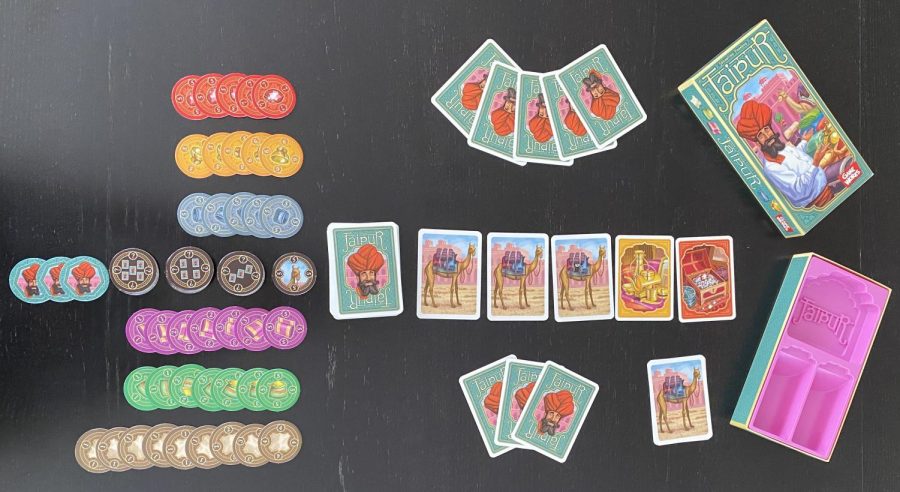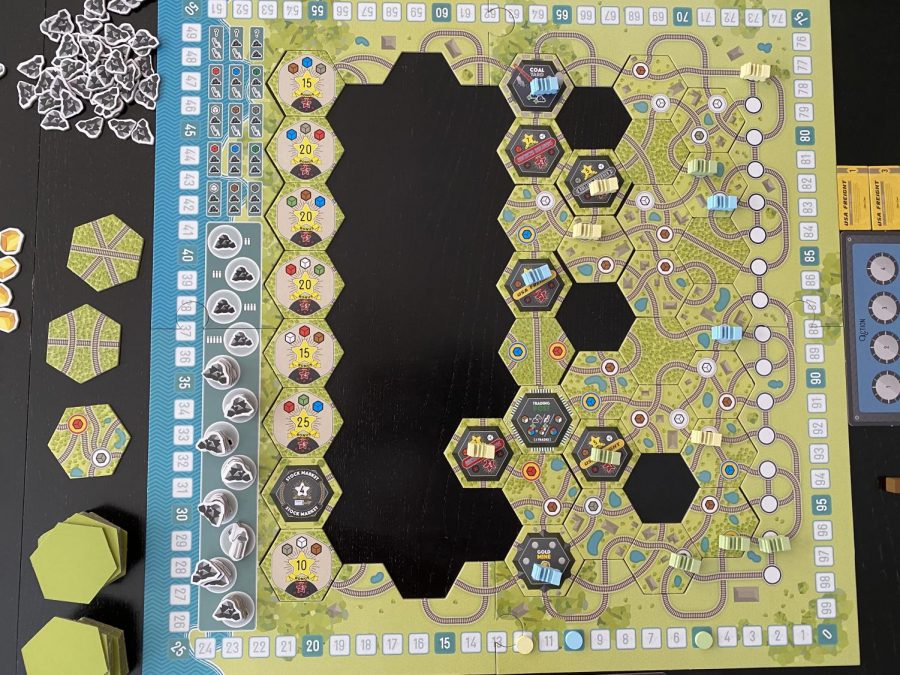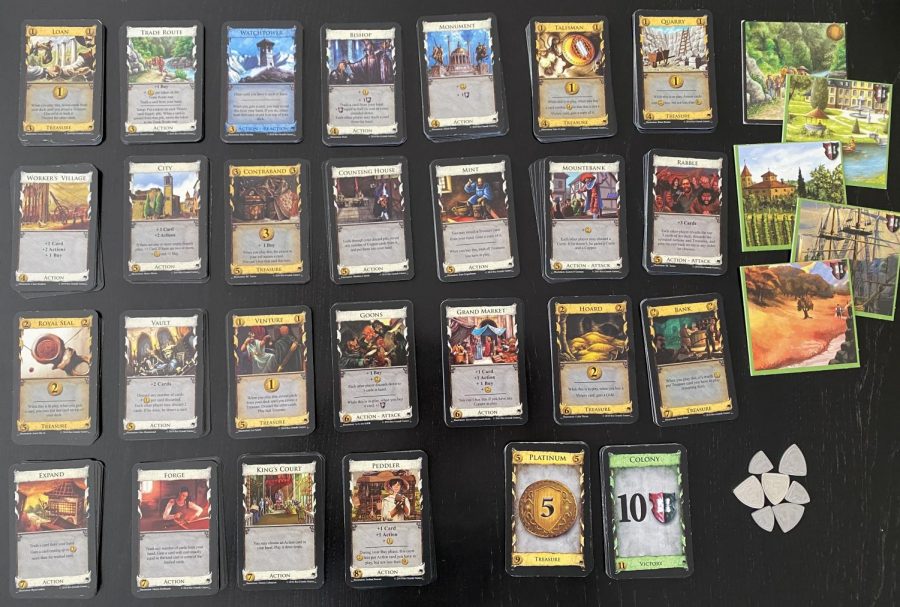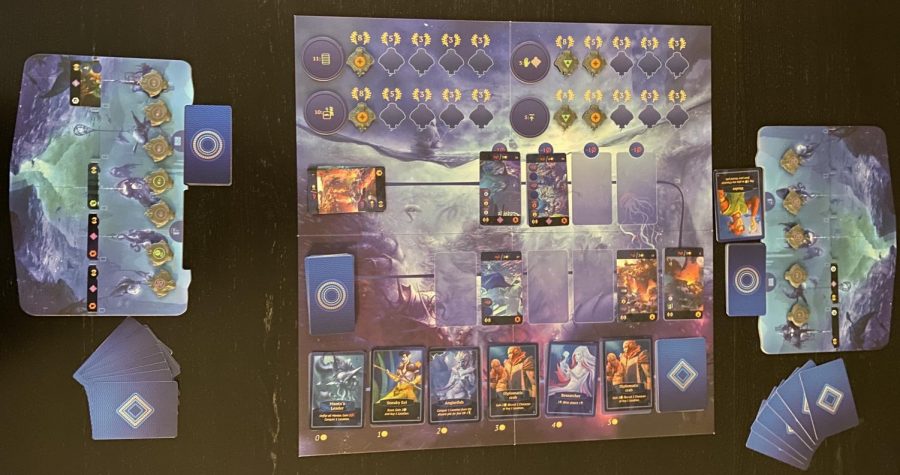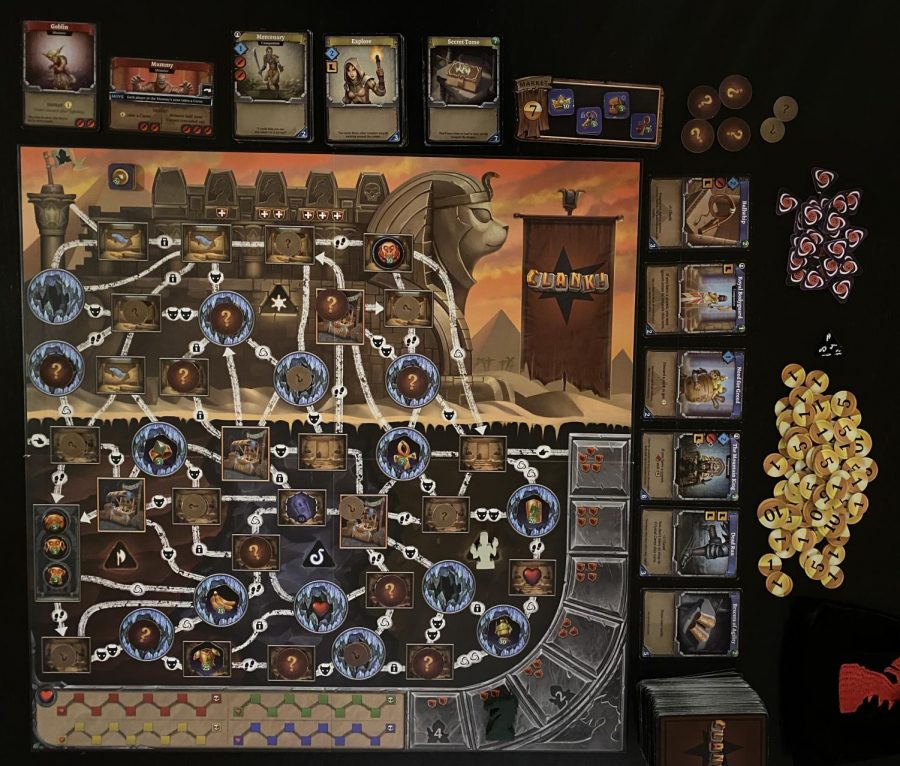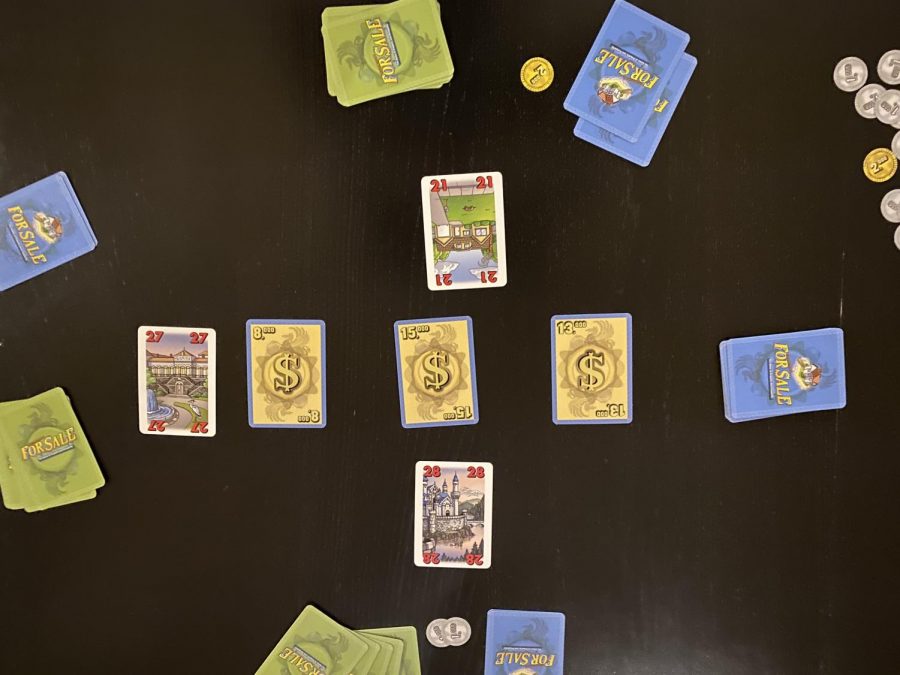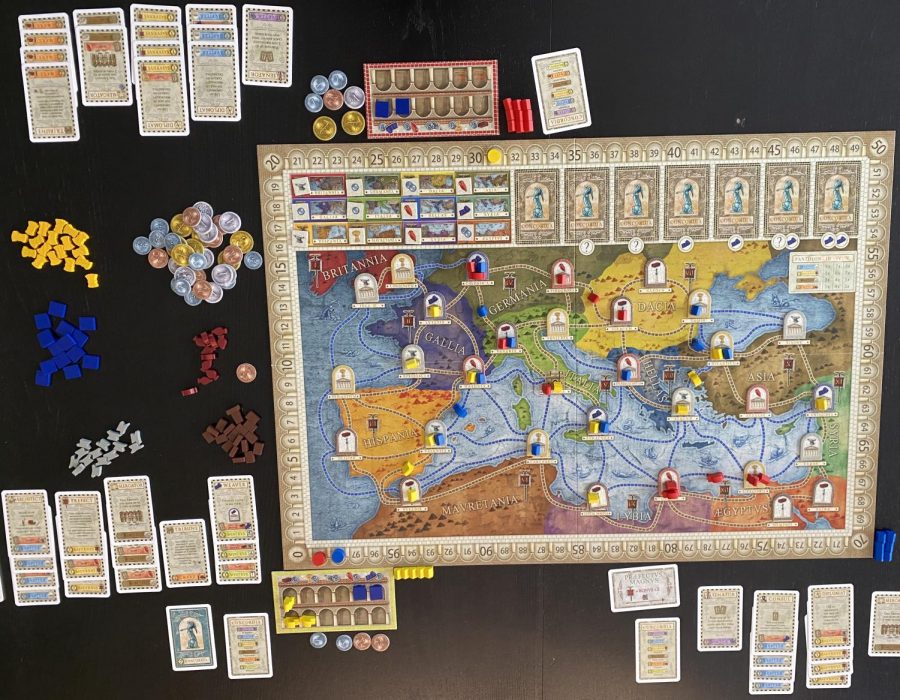This week, we’ll be taking a look at the board game Jaipur, a two-player card game published by Asmodee and Game Works. In the game, players try to become the wealthiest merchant in South Asia by managing their resources and camels. The rules to Sébastien Pauchon’s game are simple, with players taking only one action on their turn. However, precise timing and management skills will often determine the winner.
How to Play
Jaipur is played over a series of rounds until a player wins two rounds. At the start of a round, players shuffle the cards and deal five to each player. Camel cards are always placed in a faceup pile in front of the player, and the various good cards are kept in the player’s hands. Between players, you’ll set up a market row that starts with three camel cards and two cards randomly drawn from the top of the deck. On the side of the table, sort the good tokens by type and order them by value so the most valuable token is on top. Then, shuffle the three sets of bonus tokens and put the camel token next to those. You’ll also lay out the seals of excellence, which track how many rounds players have won.
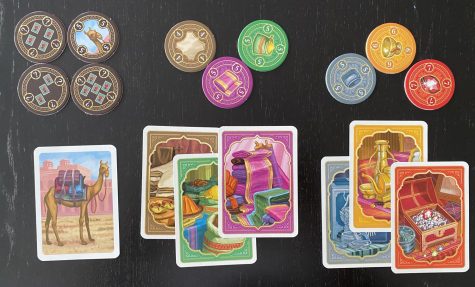
On their turn, a player must either take or sell cards. There are three ways one can take resource cards. The first way is to take one good card that is face-up in the market. The second option is best if a player wants more than one of the face-up cards in the market; a player can take two or more face-up good cards by exchanging them with good cards and/or camel cards in front of them. Either way, players may not have more than seven cards in their hand. When exchanging cards, a player may not take a card from the market that depicts the same good on a card they trade from their hand.
The third way to take cards is to take all the camels from the market row, replacing them with ones from the top of the deck. Camels are important because they do not count towards your hand size, and you can exchange them in the future to take many cards from the market. However, taking many camels can set up your opponent to take valuable goods that appear at the top of the deck.
When you sell goods, you must discard any number of good cards of the same type. If you are selling silver, gold, or rubies, the three most valuable goods, you must sell at least two goods of that type. Then, for each good card that you sold, take a good token of that matching type. If you sold three, four, or more than five goods, take the appropriate bonus token from the corresponding stack.
The round ends when there are no cards left in the deck when refilling the market or three piles of good tokens run out. The player who has the most camel cards gets the camel token, worth five bonus points. Then, both players add up the value of their good tokens and bonus tokens. The player with the highest score takes a seal of excellence to mark that they won the round. Ties are broken by whoever has the most bonus tokens and then the most total tokens. The first player to collect two seals of excellence wins the game.
Final Thoughts
The great thing about Jaipur is how easy it is to play. I can teach this to anyone, and people usually find it fun. Many two-player games are either significantly lucky, like Lost Cities, or all strategic, like classic abstract games. Jaipur has an interesting balance of luck and strategy because you can only take cards from the market, not from the top of the deck. Instead of a player benefitting from a lucky draw like in many games, players have to hope that valuable goods don’t fill the market for your opponent’s turn.
Much of the strategy comes from when you take camels. They give you more leverage to get the goods you want in the future but give your opponent more options to choose from on their next turn. The seven-card hand limit is where timing becomes interesting. Taking camels when your opponent has seven cards means that they can only exchange cards from their hand if they want some from the market. That makes the decision to go up to seven cards a gamble in the first place. You also have to keep an eye out for the game conditions so you don’t have too many unsold goods when the game suddenly ends. It becomes evident that the three most valuable goods are worth tons of points, so you have to go after them. However, another worthwhile objective to pursue is selling many goods of the same type to get the bonus tokens. If you are a mean player, you can block an opponent by selling before them to get the higher-value good tokens.
Despite Jaipur’s easy rules and strategic involvement, I find that there aren’t many situations where I would play this game. The first problem is that it’s a two-player game, meaning it’s not a great choice in a group setting. Jaipur is a great family game, but it probably won’t appeal to many gamers. They may enjoy the game, but they probably won’t come back to play it again; the game doesn’t change much each time. Each game takes two or three rounds, and I find that I get everything the game offers in that time.
Jaipur is a fast game, taking only about 10 minutes per round. It’s an excellent game for families and some gamers, but people looking for a complicated game will be turned away from it due to its simplicity. Overall, I think Jaipur is a fun game to play every once in a while because of its hidden strategies. However, each game still feels the same, so I’m going to give Jaipur a 6 out of 10.
[star rating=”3″]

